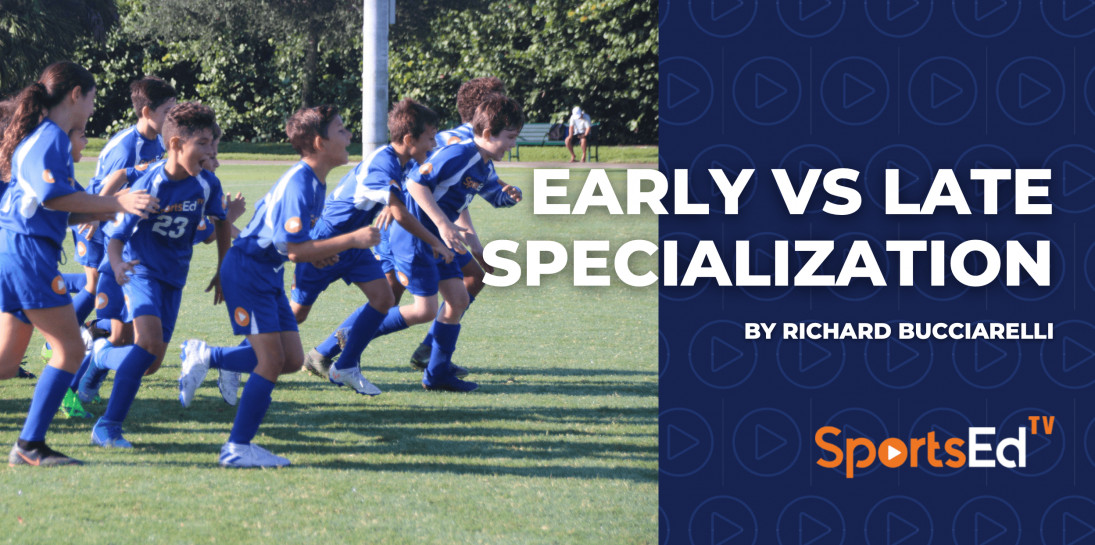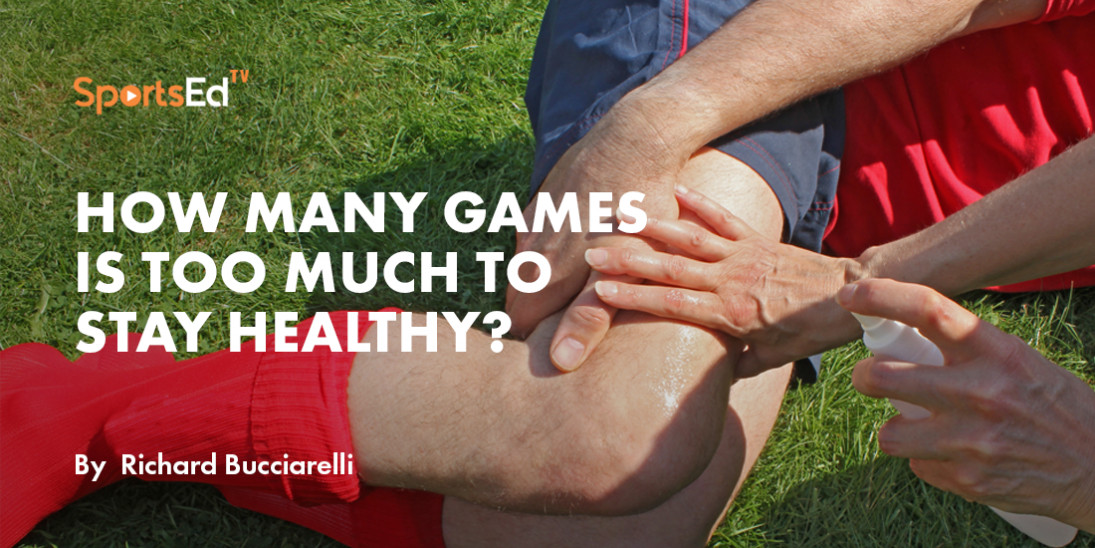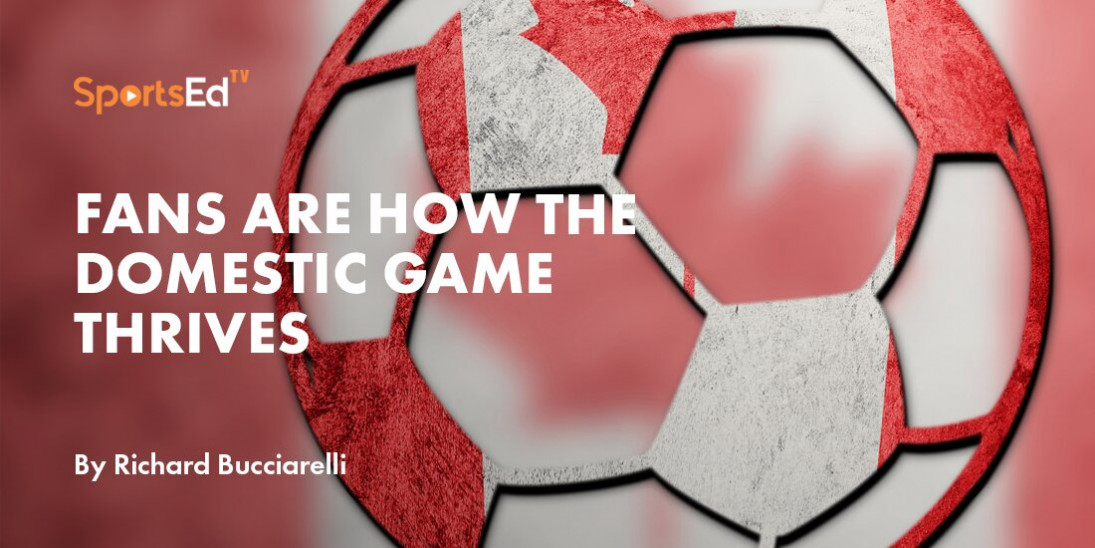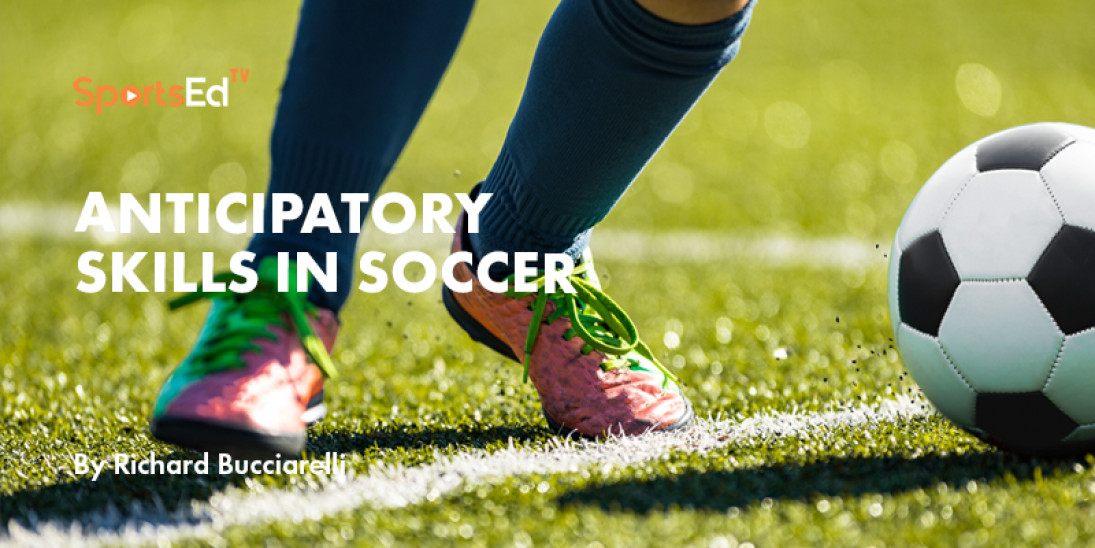Soccer
Welcome and thanks for visiting...

How To Warm Up for Soccer
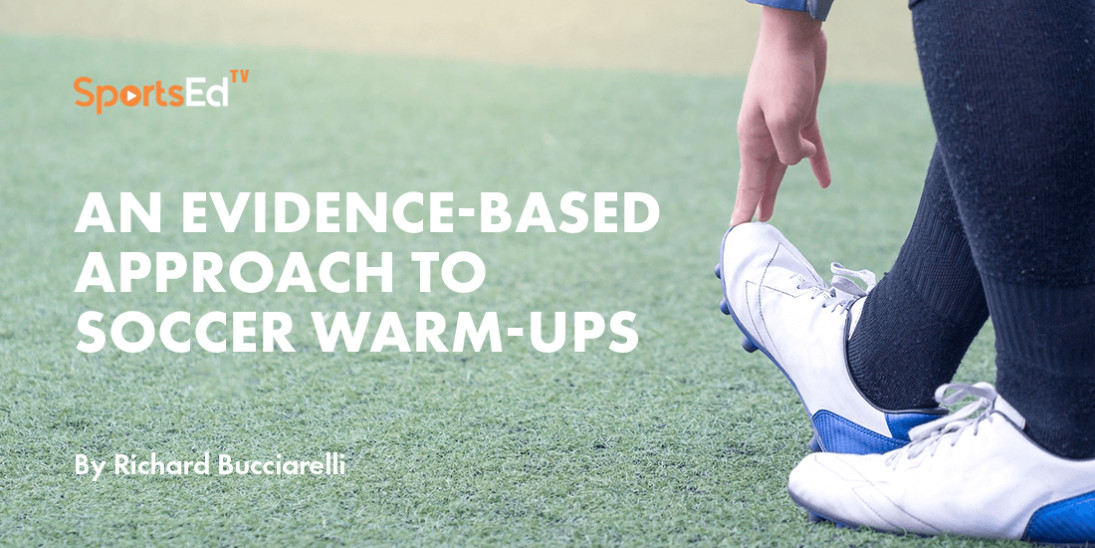
How To Warm Up for Soccer – An Evidence-Based Approach
As with all sports, the training and game load in soccer comes with an increase in injury risk. One of the best ways for soccer players – as well as all other athletes – to mitigate this risk is with a properly conducted warm-up.
Coaches and fitness coaches at all levels are always faced with the unique challenge of choosing the appropriate warm-up and stretching protocol to minimize injury risk and enable players to build and maintain fitness levels.
This article aims to shed some light on what the science has to say about optimal warm-up routines in soccer, and to provide a simple, easy-to-follow warm-up protocol, proven to help soccer players reduce injury risk and perform better in match play.
The frequent high-intensity actions performed in soccer, including sprints of varying distances and times, jumps, as well as rapid accelerations and decelerations, all contribute to an intense training and game load, and this load is often further exacerbated by factors such as extra pre-season trainings, periods of particularly intense competition such as tournaments, training camps on top of a regular season, college showcases, etc.
Warming up and stretching prior to training and competitions is a vital component of an effective training plan. It ensures that players can prevent injuries and perform optimally.
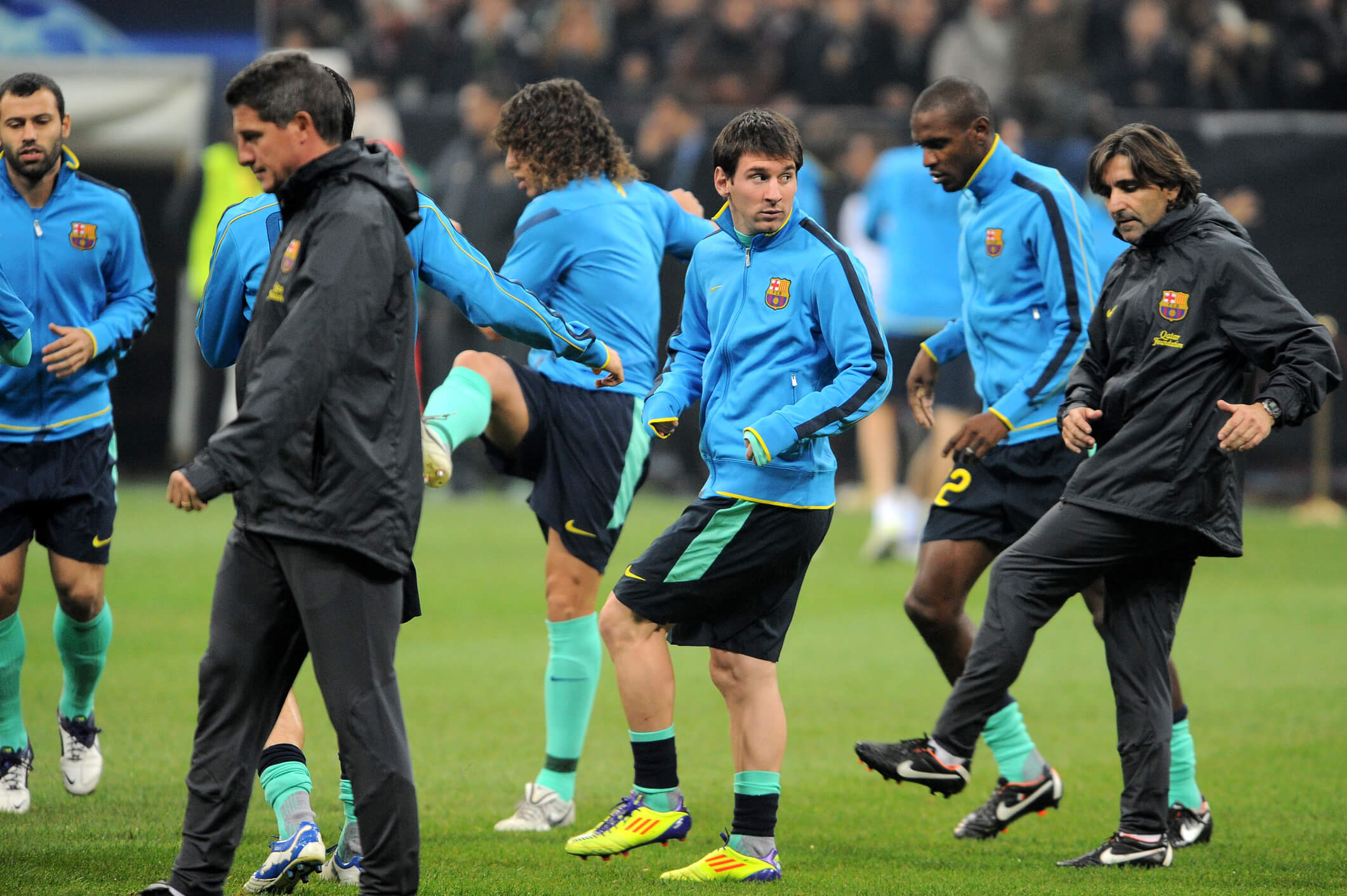 Lionel Messi warming up with FC Barcelona
Lionel Messi warming up with FC Barcelona
A proper warm-up protocol should consist of exercises and movements that raise the body’s core temperature and increase the elasticity of specific muscles used in the sport.
The duration of warmups should generally range from 15-30 minutes. When training loads are particularly heavy, be it due to extra pre-season training or multiple games in one week, warmups should be at 30 minutes. When the schedule is more standard and players are not at an increased risk of fatigue, they can typically be 15 minutes.
Movements and movement sequences used should also mimic the actual movements of the sport as closely as possible, including an eventual progression into sprints and high-speed agility running, plus technical exercises with the ball.
A good sequence of movements, utilized in the FIFA 11+ Injury Prevention Program, includes some of the following exercises, which were proven to decrease injury rates in training and match play (Soligard et al., 2008). These movements, followed by the stretching routine provided later in this article, should be the first two forms of exercise that soccer players do, before introducing a soccer ball – and more soccer-specific exercises – into their warm-up.
Below is a summary of some selected movements from the FIFA 11+ protocols used in Soligard et al. (2008):
- Hip Opening: 2 x 20m: Jogging forwards, stop at 3-metre intervals and raise one knee up to a 90-degree angle, before abducting (moving away from the midline of the body) and externally rotating the thigh, before straightening the knee and bringing the foot back to the ground; repeat with the opposite leg.
- Hip Closing: 2 x 20m: Following a similar pattern to the Hip Opening exercise, abduct and externally rotate the thigh at the start of the movement, before bringing the thigh inwards by adducting and internally rotating, and then straightening the knee and bringing it down to the ground; repeat with the opposite leg.
- Side Shuffle: 2 x 20m: Jogging forwards, stop at 3-metre intervals, stand in an athletic stance with feet wide than hip width, and knees and hips bent, and move sideways for 5 steps to one side, around a cone placed about 5 metres away, before shuffling to the opposite side and back to the starting position. Focus on not allowing the feet to touch, and staying low in an athletic posture throughout the movement.
- Gazelle Run: 2 x 30m: Running fast forwards to build up momentum, bound forwards, alternating legs in a long running stride, aiming to make each stride as long as possible, and spend as little time on the ground as possible with each foot. Aim to perform 5-6 bounds with each leg over the 30-metre distance.
Following these movement sequences, stretching should be the next phase of a warm-up. When choosing a stretching protocol, dynamic stretches are preferred over static stretches.
A study by Little et. Al. (2007), comparing the effects of both static and dynamic stretching protocols on high-speed running capabilities of professional soccer players in England showed that dynamic stretches were more effective in preparing players for the high-speed running that occurs in soccer.
Players who performed dynamic stretches as part of their warm-up in this study had faster times in 10- and 20-metre sprints, as well as in a 20-metre soccer-specific agility test, than those who performed static stretching.
A dynamic stretch is one in which a muscle or group of muscles is stretched while movement occurs at a joint or group of joints. These stretches should involve the major muscle groups used in soccer, including the hip (gluteus maximus, iliopsoas) thigh (quadriceps, hamstrings) groin (adductors) and calf (gastrocnemius / soleus). These stretches are to be done only following the 20-minute warm-up described above.
While there are several different and equally effective dynamic stretching routines that can be used in soccer, one particular protocol that has been cited in numerous papers, and has also been used by professional sports teams in a variety of sports including soccer was developed by G.A. Frederick and D.J. Szymanski in 2001.
Below is a summary of the dynamic stretching exercises included in their protocol:
- Quadriceps: Backward Reach Run (“butt kicks”): 5 x 10m: Running forwards, quickly flex legs at the knee, exaggerating the movement and bringing the heel up to touch the butt
- Adductors: Walking Lateral Lunge: 2x20 (10 with each leg): Take a long and wide step to the side, keeping the other leg straight, and bend at the knee of the stepping leg, keeping the foot facing forwards and bum back, until a stretch is felt in the adductor muscles of the straight leg; repeat with opposite leg
- Iliopsoas: Walking Drop Lunge: 2x20 (10 with each leg): Take a long forward step, and bend at the knee until the knee reaches a 90-degree angle, or until a stretch is felt in the hip of the back leg; repeat with opposite leg
- Hamstrings: Straight Leg March: 2x20 (10 with each leg): Walking forwards, during each step exaggerate a kicking motion, keeping the knee completely straight on each kick, and kicking high enough to feel a stretch in the hamstring muscles
- Gastrocnemius: Heel-to-Toe Walk: 2x20 (10 with each leg) Walking forwards, step and land in maximal dorsiflexion (toe pointing upwards) and finish each foot contact in maximal plantar flexion (toe pointing downwards); repeat using opposite leg
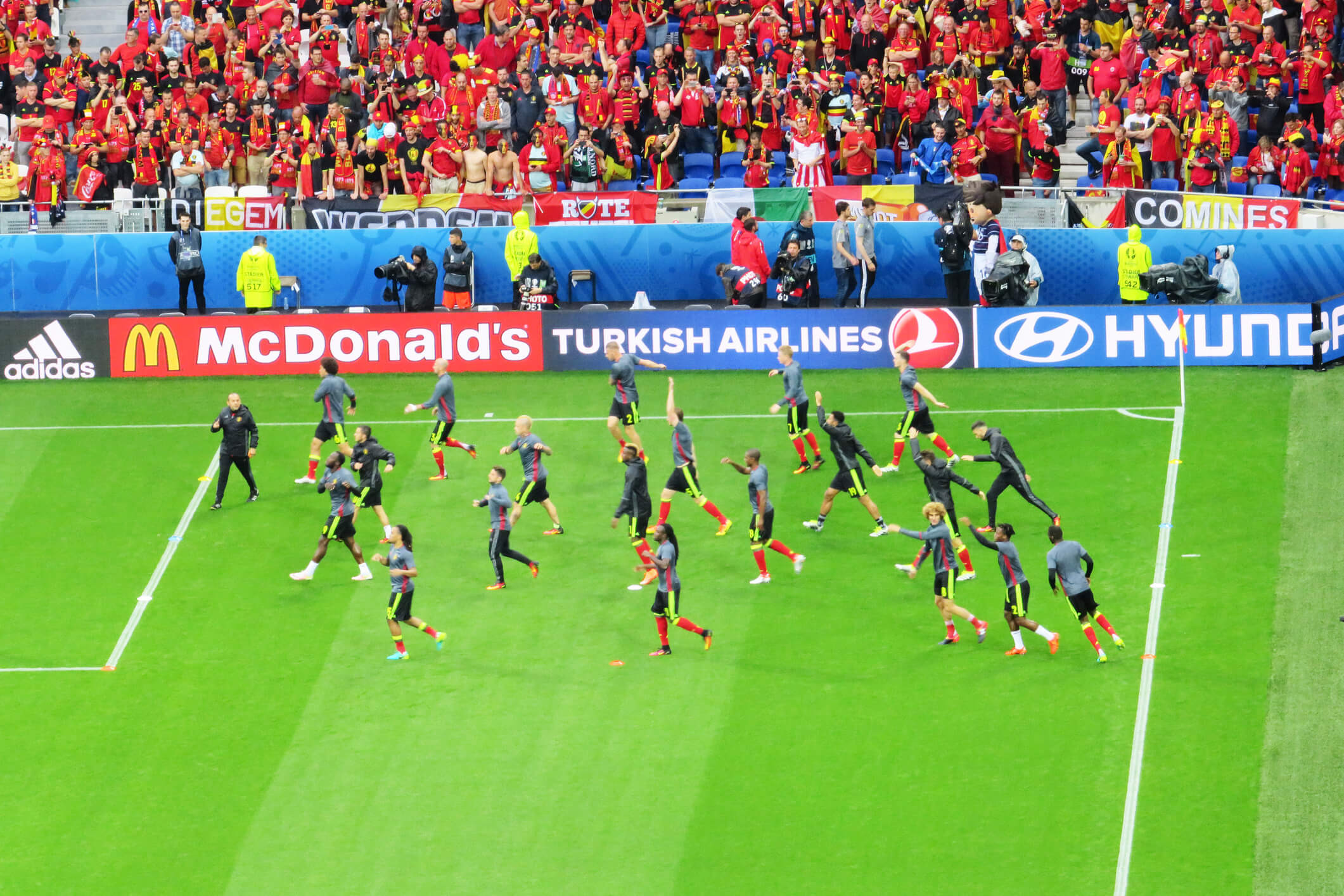 Warm-ups focused on dynamic movements are more effective than static stretches
Warm-ups focused on dynamic movements are more effective than static stretches
After performing dynamic stretches, the final phase of a warm-up (prior to using the ball) should involve exercises designed to potentiate – that is, increase the force and power producing capabilities – of the muscles and the neuromuscular system. Potentiation of muscles is achieved following specific exercises designed to activate those muscles, a process termed post-activation potentiation.
This may sound complicated, but a simple and proven way to achieve this enhanced force and power production is to perform either heavy resistance training, or plyometric training, prior to sport or exercise participation (Wilson et al., 2013).
In the case of a soccer warm-up, the ideal choice for potentiation is plyometric exercises because they require no extra equipment, and can be easily completed on the pitch, right before the end of the warm-up and start of training or match play.
What exactly are plyometrics? Exercises that involve repeated jumping or bounding movements, with an emphasis placed on minimizing the time that the feet are in contact with the ground, and at the same time, maximizing the power of each jump.
Below is a sample plyometric routine that can be added into a pre-training or pre-game warm-up, as the final actions players perform prior to working with the ball:
- 2-Leg Squat Jumps: 2 x 6 Jumps: Standing with feet hip-width apart, jump as high as possible, landing with feet in the same position, making the landing as quick as possible with a bend in the knees and hips, prior to repeating the jumping movement.
- Skater Jumps: 2 x 4 Jumps to Each Side: Stand on one leg, and jump laterally, landing on the opposite leg with a bend at the hip and knee. Minimize the time the foot is in contact with the ground, before repeating the movement by jumping to the opposite side.
- Gazelle Run: 2 x 5 Strides with Each Leg: Run forwards to build some momentum, then leap forwards, exaggerating the running stride and aiming to make each stride as long as possible, while at the same time, minimizing the time that each foot is in contact with the ground.
Ultimately, there are thousands of ways to achieve a good warm-up in general. Following an evidence-based approach, choosing exercises and protocols that have been proven to reduce the risk of injury and improve athletic performance – like the ones mentioned in this article – is always the best strategy.
Fredrick, G.A., & Szymanski. D.J. (2001). Baseball (part 1): Dynamic flexibility. Strength and Conditioning Journal, 23:2130.
Little, L., Williams, A.G.. Effects of differential stretching protocols during warm-ups on high-speed motor capacities in professional soccer players. Journal of Strength and Conditioning Research, 20(1), 203-7, 2006
Soligard, T., Myklebust, G., Steffen, K., Holme, I., Silvers, H., Bizzini, M., … Andersen, T. E. (2008). Comprehensive warm-up programme to prevent injuries in young female footballers: cluster randomised controlled trial. BMJâ¯: British Medical Journal, 337, a2469.
Wilson, J. M., Duncan, N. M., Marin, P. J., Brown, L. E., Loenneke, J. P., Wilson, S. M., Jo, E., Lowery, R. P., & Ugrinowitsch, C. (2013). Meta-analysis of postactivation potentiation and power: effects of conditioning activity, volume, gender, rest periods, and training status. Journal of strength and conditioning research, 27(3), 854–859.


